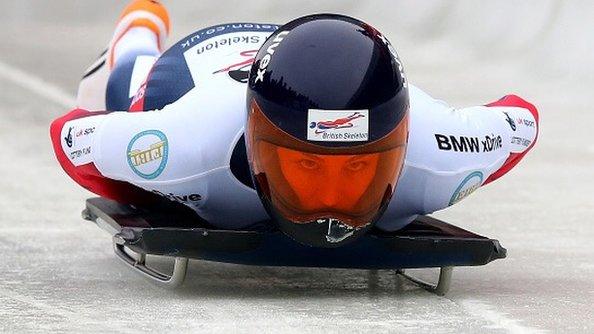Laura Deas column: 'Reconnecting and competing again'
- Published

I'm really excited about the new season and definitely feel we're getting to the business end of things now. I'm currently in Whistler, Canada preparing for the first World Cup of the year.
It's really nice to get out on the circuit, reconnect with people and see what they've been up to and start competing again.
For us, it's all about competing internationally and knowing where you are on the world stage, so as soon as you start to slide against people from other nations again that's when it really starts to feel real. We have a very long off-season in skeleton - six months without seeing ice - and so this is what we've been waiting for.
I'd say there's generally a very strong camaraderie amongst sliding-sport athletes as it's quite a dangerous sport, and we all hold that in common.
Rivalry but respect
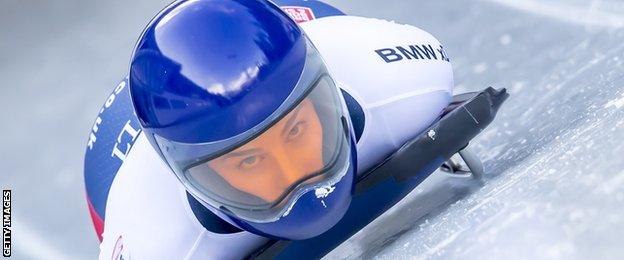
Laura Deas recorded two podium finishes during the 2015-16 World Cup skeleton season
Everybody knows that we're competing against each other but we all have a respect for each other and respect for what we do. It's what gives the changing room before a big event such a feeling of focus and anticipation.
The women's field at the moment is quite interesting because anybody in the top 10 is capable of standing on the podium if they put together the right race. You never know how people are going to come out of pre-season and how quickly they'll get back into sliding.
It will be really interesting to see what happens as quite a few athletes had a strong season last year and I like to think I'm one of them. Whistler's quite a different track to Altenberg and we're on a different continent as well so the circumstances aren't the same, but I'm hoping I'll be able to start strongly again.
The skeleton season tends to be very long. We typically leave the UK for the ice in mid-October and don't get more than a couple of weeks at home between then and Christmas. We then set off again around New Year and stay out on circuit until the end of February or even March depending on the events.
In the summer, you're able to look at the season as a whole, but once you're on that conveyer belt of travelling and competing week in, week out you can only take it one week at a time. Otherwise it can become quite overwhelming with the amount of information you've got to remember and places you've got to perform well at.
The nature of the constant travel to different tracks means that we get very good at planning and analysis - and living out of a bag. We're generally in a new venue each week on tour so at the start of the week you have to get your head in the game for the next race. You look over your track notes from the previous year at that venue, maybe look at some video or your last performance and then start to build a strategy for the week from there.
We also have limited access to the ice before a competition. Typically we'll only get six training runs before a race so that's less than six minutes of actual contact time with the track. A lot of what we do is around maximising that time so we'll do plenty of analysis and we'll get in the track, walk down it, look at the ice in detail and try and read the profiles, the curves and what they're likely to do to the sled and what path you're probably going to end up taking.
Then we'll put a plan together from there, try it out on day one and adjust what needs adjusting. We also have to consider weather and ice changes through the week and tune our sleds to get the most speed from the track that we can, so I often end up a little obsessed with checking my weather app to see if anything is changing.
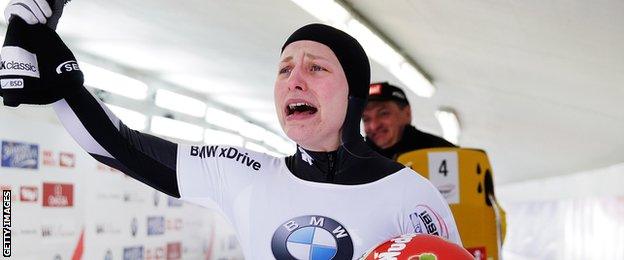
World champion Tina Hermann of Germany will be one of competitiots Laura Deas will be up against
'One of the hardest things is being consistent'
Each race consists of two runs apart from the World Championships and Olympics which is four runs over two days, and so one of the hardest things about skeleton is being consistent. It's one thing to put down one amazing run but then to be able to back that up with another one or another three is the real challenge and that's what it takes athletes years to get good at.
When you consider that tracks have around 15 corners on average and you may have up to four steers in each corner, then add in the fact that you are travelling at between 30 and 40 metres per second under significant G-forces, it's easy to see how hard it is to repeat exactly what you just did again and again.
Whistler will be the first of eight World Cup races and the last of those World Cups will be the test event in Pyeongchang, which will host the 2018 Winter Olympics.
Everybody is really excited to get their first look at the new Olympic track, see what it feels like and if they get on with it or not. As soon as we get onto the same ice that the next Games will be decided on it will feel like the countdown timer is truly on.
- Published2 November 2016
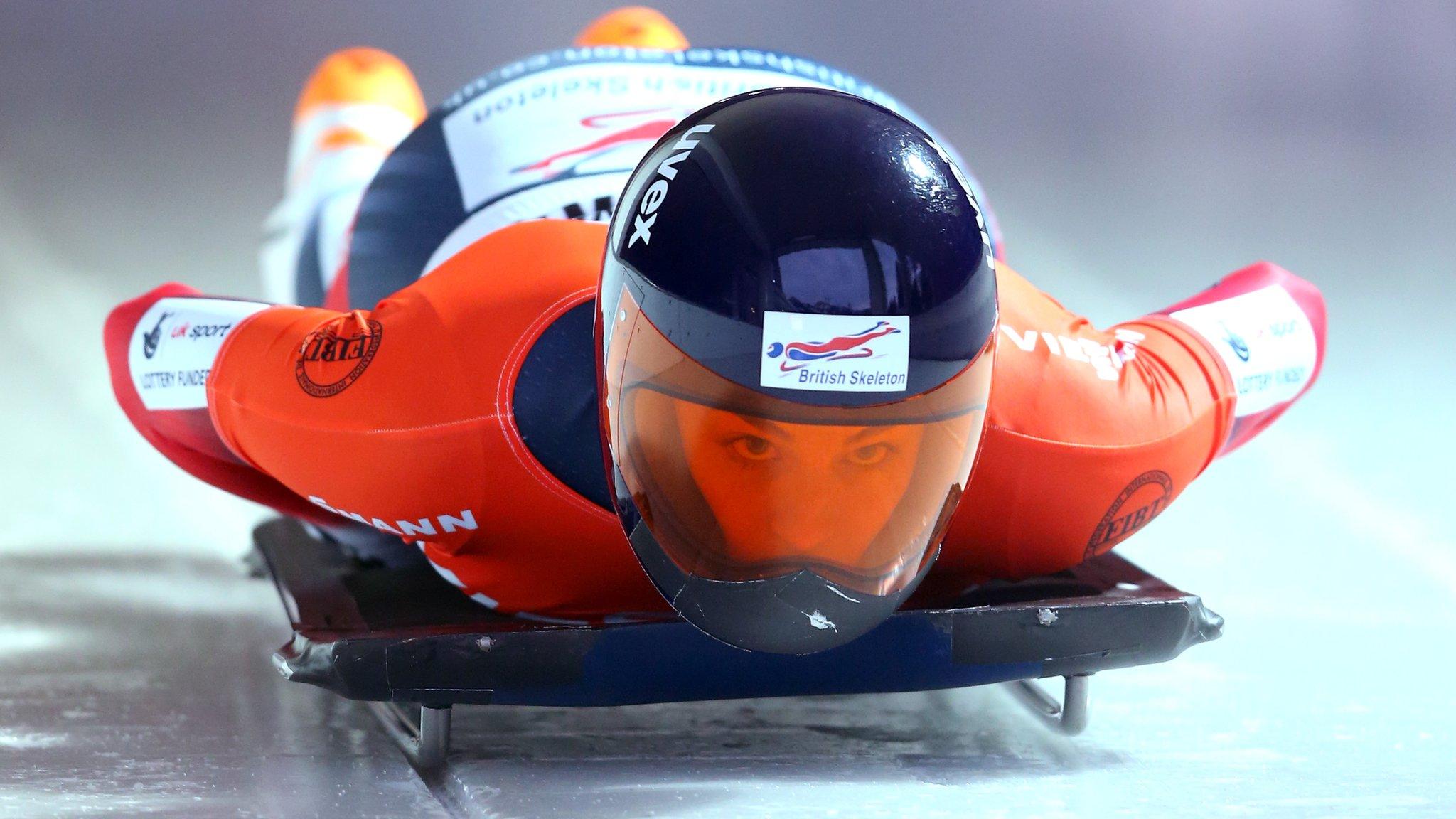
- Published27 November 2015
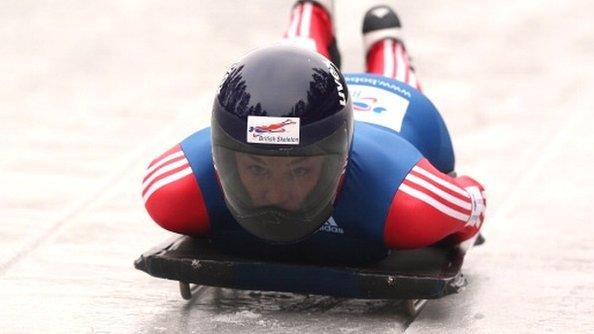
- Published21 November 2015
